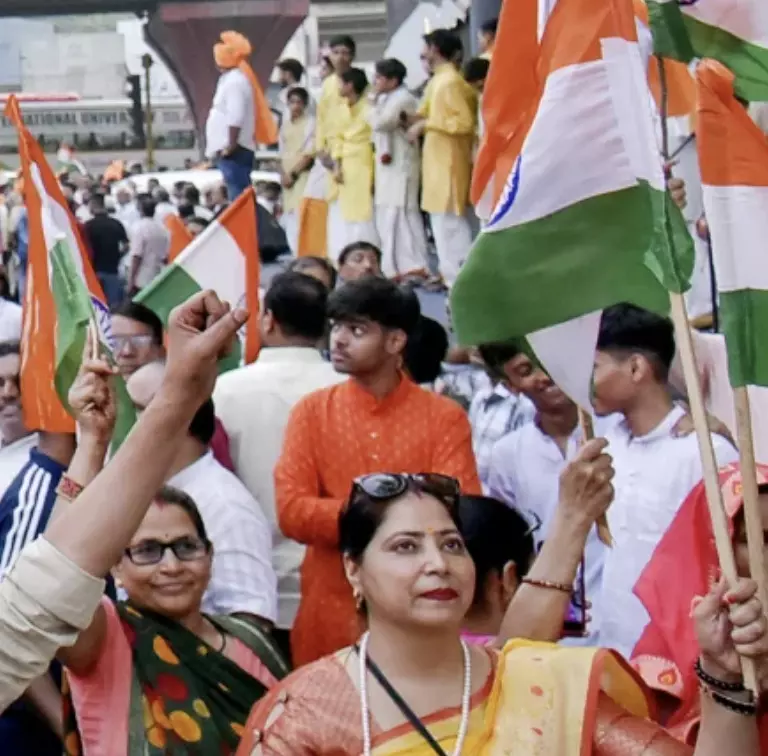Missiles, drones, and diplomacy: How India and Pakistan agreed to a fragile ceasefire
Missiles, drones, and diplomacy: How India and Pakistan agreed to a fragile ceasefire

After four tense days of the fiercest India-Pakistan conflict in decades—marked by airstrikes, drone attacks, and missile launches—the two nuclear-armed rivals suddenly stepped back from the brink. A ceasefire, as abrupt as the hostilities were intense, was announced Saturday, bringing relief and cautious optimism.
While both sides offer conflicting versions of how the truce came about, new information reveals a behind-the-scenes flurry of military communication and international diplomacy that helped halt the spiral into a potential full-scale war.
A Hotline Message That Changed Everything
According to India’s military, the breakthrough began Saturday afternoon when Pakistan's top military leadership reached out through a special “hotline” to India. Indian officials had just begun high-level military strategy sessions to counter Pakistan’s early morning attacks when the call came through.
India’s Director General of Military Operations, Lt. Gen. Rajiv Ghai, confirmed that at 3:35 p.m. local time, he spoke directly with his Pakistani counterpart. The two agreed to a ceasefire, and further talks were planned to ensure it would hold.
Pakistan confirmed it had made contact but framed the efforts differently, stating that it had reached out to global intermediaries to initiate peace. A senior Pakistani official told CNN the United States played a crucial role in orchestrating those backchannel discussions.
Washington’s Quiet—but Crucial—Role
US President Donald Trump was the first to publicly announce the truce, crediting his administration’s behind-the-scenes negotiations. "Using common sense and great intelligence," Trump wrote on Truth Social, "India and Pakistan have agreed to a FULL AND IMMEDIATE CEASEFIRE."
While Islamabad welcomed the US involvement, publicly thanking Trump and his administration, India was quick to assert that the ceasefire was the result of direct bilateral communication—not external mediation. New Delhi has long opposed third-party intervention in its dealings with Pakistan.
Still, multiple sources confirmed that US Secretary of State Marco Rubio and Vice President JD Vance had directly engaged both governments in recent days. Pakistani Prime Minister Shehbaz Sharif praised Washington's leadership, while Indian officials remained tight-lipped, maintaining the narrative of self-driven diplomacy.
China and Saudi Arabia also reportedly urged both nations to de-escalate. Chinese Foreign Minister Wang Yi had held separate talks with leaders from both countries, offering Beijing’s support for peace efforts.
The Lead-Up to the Truce
India says it initiated contact earlier in the week after launching strikes on suspected terror camps inside Pakistan, claiming it was forced to act due to imminent threats. However, Pakistani officials said India had requested a ceasefire only after major operations on May 8 and 9, which Islamabad initially rejected, opting instead for retaliation.
After India’s pre-dawn strikes on Pakistani airbases Saturday, Pakistan launched what it described as “eye-for-eye” strikes on Indian military infrastructure. The intense exchange jolted the diplomatic channels into high gear.
Despite Pakistan denying cross-border drone and artillery attacks, India insisted that such violations continued through the week. A Pakistani diplomat admitted surprise at India's early Saturday strikes, believing that diplomatic discussions were still ongoing.
A Fragile Peace
Even after the ceasefire was declared, both sides traded accusations of minor violations. Nevertheless, the agreement has mostly held, offering a much-needed pause in hostilities and relief to civilians on both sides of the border.
The contrasting narratives—India emphasizing direct talks and Pakistan highlighting global diplomacy—reflect their broader geopolitical strategies. India, positioning itself as a regional power, traditionally resists foreign mediation. Pakistan, reliant on global alliances and aid, tends to welcome it.
Regardless of who takes the credit, the ceasefire brings temporary calm to one of the world’s most volatile rivalries. Whether it lasts, however, remains an open question.

